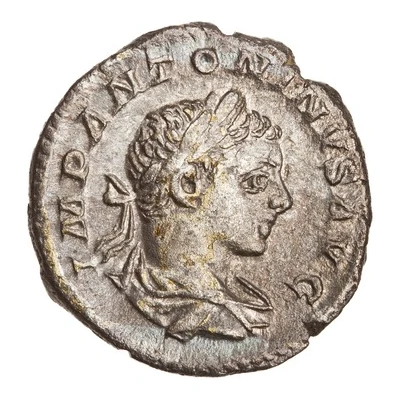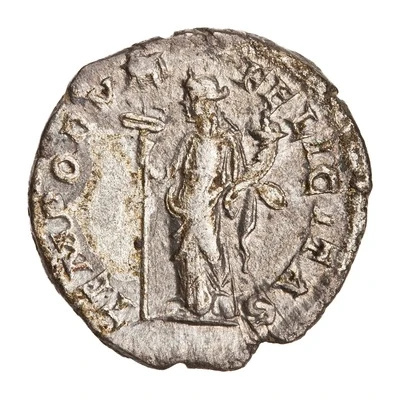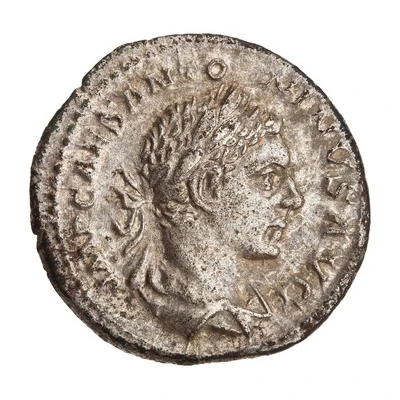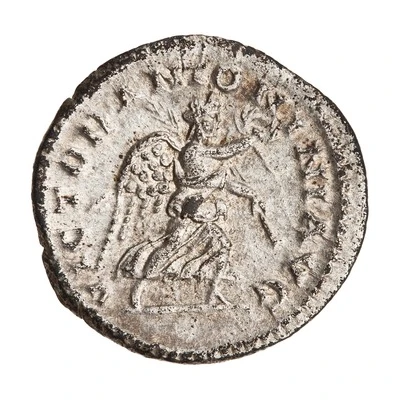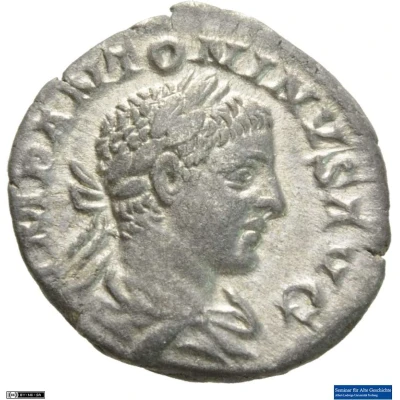
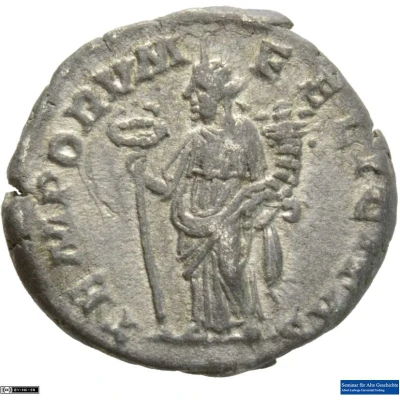

© Münzsammlung des Seminars für Alte Geschichte, Albert-Ludwigs-Universität Freiburg (CC BY-NC-SA 3.0 DE)
Denarius - Elagabalus TEMPORVM FELICITAS; Felicitas
| Silver | 2.8 g | 18.5 mm |
| Issuer | Rome › Roman Empire (27 BC - 395 AD) |
|---|---|
| Emperor | Elagabalus (Sextus Varius Avitus Basianus) (218-222) |
| Type | Standard circulation coin |
| Years | 218-222 |
| Value | Denarius (½) |
| Currency | Antoninianus, Reform of Caracalla (AD 215 – 301) |
| Composition | Silver |
| Weight | 2.8 g |
| Diameter | 18.5 mm |
| Shape | Round (irregular) |
| Technique | Hammered |
| Orientation | Variable alignment ↺ |
| Demonetized | Yes |
| Updated | 2024-10-05 |
| Numista | N#276787 |
|---|---|
| Rarity index | 97% |
Reverse
Felicitas, draped, standing left, holding caduceus in right hand and cornucopiae in left hand.
Script: Latin
Lettering: TEMPORVM FELICITAS
Unabridged legend: Temporum Felicitas.
Translation: Fortunate times.
Comment
Mass varies: 2.56–3 g;Diameter varies: 18–18.9 mm;
Example of this type:
Münzsammlung des Seminars für Alte Geschichte, Albert-Ludwigs-Universität Freiburg
Source:
Online Coins of the Roman Empire (OCRE)
Interesting fact
One interesting fact about this coin is that it features an image of the Roman goddess Felicitas, who was revered as a symbol of good luck and prosperity. The inclusion of her image on the coin may have been a deliberate choice by Elagabalus, who was known for his unconventional religious practices and may have been seeking to promote the worship of Eastern deities in Rome. This coin, therefore, offers a unique insight into the cultural and religious diversity of the Roman Empire during the 3rd century AD.
